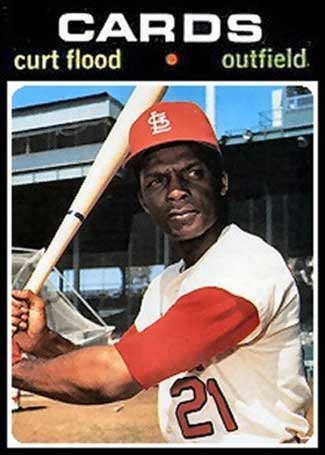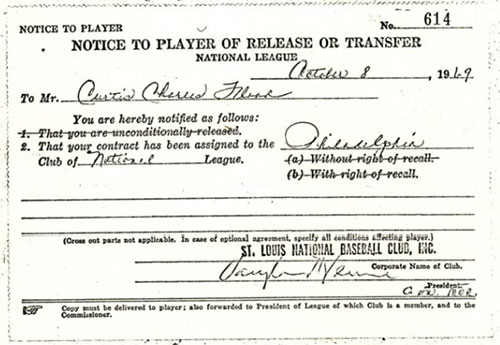

Called up to the Reds, he went 0-for-1.Įarning promotion to Savannah of the Class A South Atlantic League in 1957, Flood was moved to third base. He also hit 29 homers and drove in 128 runs. Despite his size (5-feet-7, 140 pounds), he was signed by the Cincinnati Reds to a $4,000 contract and shipped off to the Deep South.įlood led High Point-Thomasville of the Class B Carolina League to a pennant, leading the league with a. After this incident, though, Curt mended his ways.Įarly in 1956, Flood graduated from Oakland Technical High School, where he had transferred from McClymonds High after moving in with his divorced sister Barbara so he could care for her children while she worked. Carl would later serve a prison term for bank robbery and struggle with heroin addiction. By nine, he was the catcher for the Junior's Sweet Shop team in a local midget league.įollowing in the footsteps of an older brother Carl, Curt was 10 when he stole a truck and crashed it.

By seven, he could outrun other kids in his West Oakland ghetto neighborhood. The family moved to California when Flood was two. 18, 1938 in Houston, the youngest of six children of hardworking but poor parents. Instead, he declared war on the reserve clause, filing an anti-trust suit.įlood was born on Jan. When Kuhn refused, Flood decided to retire, but then changed his mind. Refusing to accept the trade, he wrote a letter asking Commissioner Bowie Kuhn to declare him a free agent. But, most important, he didn't think he should be treated like a commodity. He didn't like Philadelphia, a losing team in a rundown ballpark with hostile fans in a city he regarded as racist. He didn't appreciate hearing about it from a front-office underling. Flood had several problems with the deal. In 1969, the Cardinals sent Flood to the Philadelphia Phillies as part of a seven-player trade. 293.īut his baseball legacy is fated to have little connection with his accomplishments on the field.Ĭurt Flood won seven Gold Gloves in his 12 seasons with the Cardinals.įlood is best remembered for his courage in challenging the reserve clause, a move as crucial to the economic rights of players as Jackie Robinson's was to breaking the color barrier. 2 batter who had at least 200 hits twice, his lifetime batting average was. 300 six times and won seven Gold Gloves in his 12 seasons with the Cardinals. Louis teams in the 1960s, Curt Flood hit better than. And Curt, to his everlasting credit, said, 'But would it benefit all the other players and future players?' And I said, 'Yes.' And he said, 'That's good enough for me,' " says Marvin Miller on ESPN's SportsCentury series.Ī superlative centerfielder on three pennant-winning St. Louis Cardinals."I said to Curt - unless some miracle takes place and the Supreme Court reverses itself - you're not going to win. The insults did not end once he landed in the big leagues with the St.

He endured indignities like sitting in his soaked jersey between doubleheaders because he could not shower with his teammates and waiting in the bus while his team celebrated winning a championship at a hotel. Along the way, Flood navigated segregated Southern minor league cities like Thomasville, N.C. Flood was part of a pioneering wave of Black players who were introduced to segregated baseball in their adolescence, followed Jackie Robinson into the big leagues and emerged as stars at the height of the Civil Rights movement. He stacked them up like others do birthdays, stitching together a 226-game errorless streak and claiming the award annually from 1963 to 1969. Throughout most of the 1960s, National League center fielders fought for runner-up to Flood for the position's Gold Glove. Showing fleet feet and a slick glove, Curt Flood patrolled center field like few others to have ever played Major League Baseball.


 0 kommentar(er)
0 kommentar(er)
